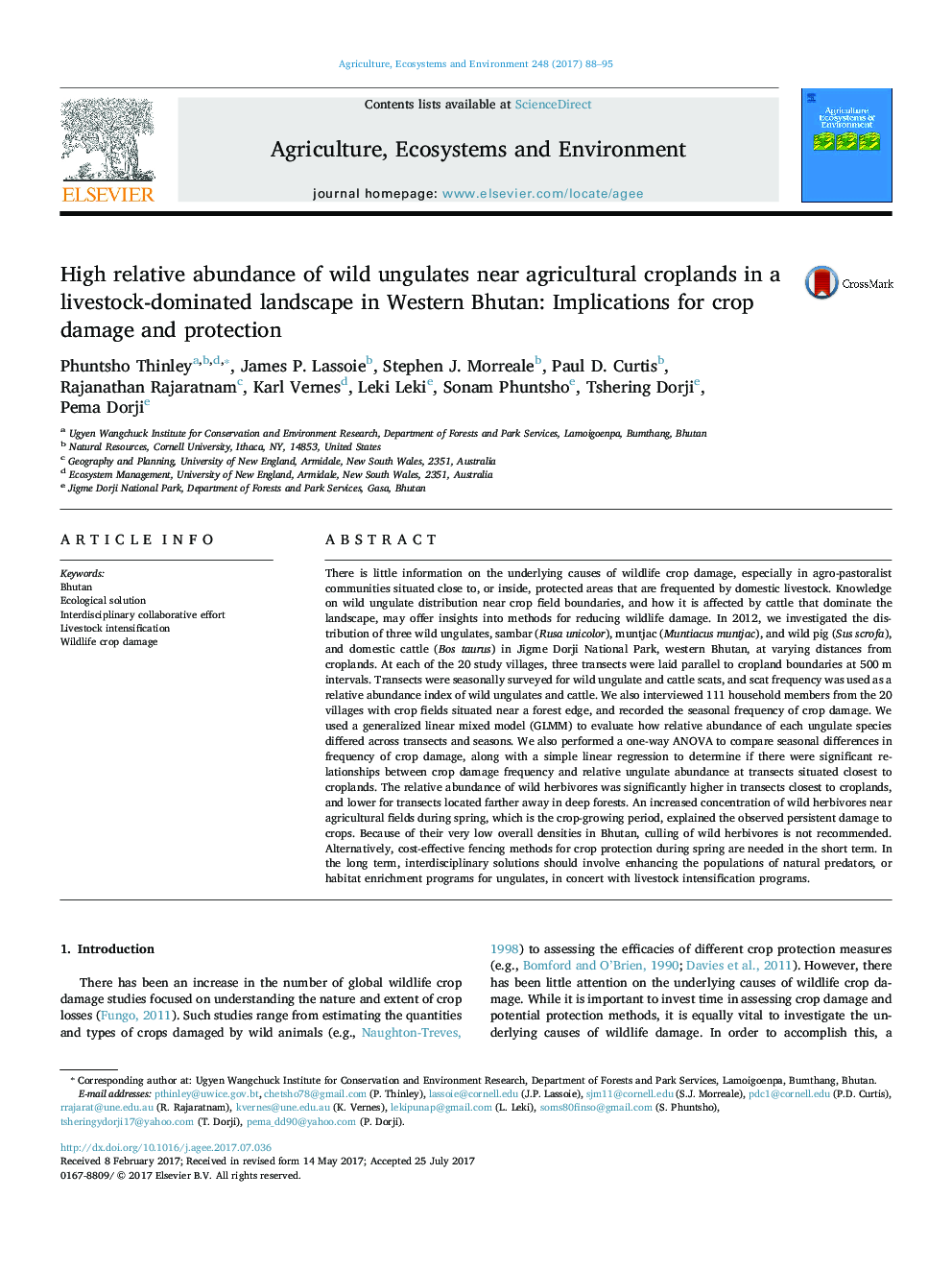| کد مقاله | کد نشریه | سال انتشار | مقاله انگلیسی | نسخه تمام متن |
|---|---|---|---|---|
| 5537807 | 1552004 | 2017 | 8 صفحه PDF | دانلود رایگان |
عنوان انگلیسی مقاله ISI
High relative abundance of wild ungulates near agricultural croplands in a livestock-dominated landscape in Western Bhutan: Implications for crop damage and protection
ترجمه فارسی عنوان
فراوانی نسبی بالا از صاف وحشی در نزدیکی زراعت کشاورزی در یک چشم انداز حاکم بر دام ها در غرب استان بوتان: پیامدهای آسیب زراعی و حفاظت از محصول
دانلود مقاله + سفارش ترجمه
دانلود مقاله ISI انگلیسی
رایگان برای ایرانیان
کلمات کلیدی
بوتان، راه حل زیست محیطی، تلاش مشترک بین رشته ای، تشدید دامداری، آسیب زراعی حیات وحش،
موضوعات مرتبط
علوم زیستی و بیوفناوری
علوم کشاورزی و بیولوژیک
علوم زراعت و اصلاح نباتات
چکیده انگلیسی
There is little information on the underlying causes of wildlife crop damage, especially in agro-pastoralist communities situated close to, or inside, protected areas that are frequented by domestic livestock. Knowledge on wild ungulate distribution near crop field boundaries, and how it is affected by cattle that dominate the landscape, may offer insights into methods for reducing wildlife damage. In 2012, we investigated the distribution of three wild ungulates, sambar (Rusa unicolor), muntjac (Muntiacus muntjac), and wild pig (Sus scrofa), and domestic cattle (Bos taurus) in Jigme Dorji National Park, western Bhutan, at varying distances from croplands. At each of the 20 study villages, three transects were laid parallel to cropland boundaries at 500Â m intervals. Transects were seasonally surveyed for wild ungulate and cattle scats, and scat frequency was used as a relative abundance index of wild ungulates and cattle. We also interviewed 111 household members from the 20 villages with crop fields situated near a forest edge, and recorded the seasonal frequency of crop damage. We used a generalized linear mixed model (GLMM) to evaluate how relative abundance of each ungulate species differed across transects and seasons. We also performed a one-way ANOVA to compare seasonal differences in frequency of crop damage, along with a simple linear regression to determine if there were significant relationships between crop damage frequency and relative ungulate abundance at transects situated closest to croplands. The relative abundance of wild herbivores was significantly higher in transects closest to croplands, and lower for transects located farther away in deep forests. An increased concentration of wild herbivores near agricultural fields during spring, which is the crop-growing period, explained the observed persistent damage to crops. Because of their very low overall densities in Bhutan, culling of wild herbivores is not recommended. Alternatively, cost-effective fencing methods for crop protection during spring are needed in the short term. In the long term, interdisciplinary solutions should involve enhancing the populations of natural predators, or habitat enrichment programs for ungulates, in concert with livestock intensification programs.
ناشر
Database: Elsevier - ScienceDirect (ساینس دایرکت)
Journal: Agriculture, Ecosystems & Environment - Volume 248, 1 October 2017, Pages 88-95
Journal: Agriculture, Ecosystems & Environment - Volume 248, 1 October 2017, Pages 88-95
نویسندگان
Phuntsho Thinley, James P. Lassoie, Stephen J. Morreale, Paul D. Curtis, Rajanathan Rajaratnam, Karl Vernes, Leki Leki, Sonam Phuntsho, Tshering Dorji, Pema Dorji,
